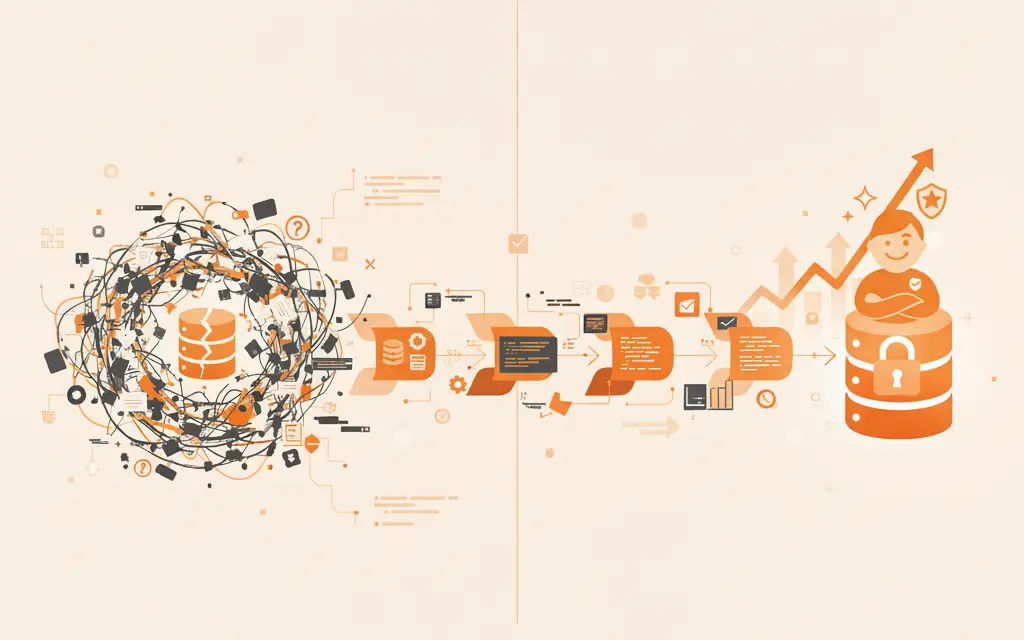
From Chaos to Confidence: How Incremental Delivery Saved My Database Refactor
Refactoring database structures is rarely glamorous it’s one of those engineering tasks that looks simple on paper but quickly spirals into complexity.
When you’re working in fast-moving environments, especially with AI-assisted development, the challenge isn’t just to make the code work it’s to keep it safe, reviewable, and deployable.
In this story, I’ll share how what started as a risky “big-bang” refactor turned into a smooth, confident rollout all by embracing incremental delivery.
A few weeks ago, I started working on a new feature for one of our core modules Agents.
The feature itself sounded simple: add Agent Versions, a way to track changes and maintain version history for each agent.
At first, I thought “How hard can it be?”
It turns out, harder than I expected.
The First Attempt: The “Big Bang” Refactor
My initial plan was straightforward:
- Create a new
agent_versiontable. - Move all existing relationships from the
agentstable to this new one. - Replace every usage of the old table in the codebase.
I made all those changes in one go.
Technically, it worked.
The migrations ran, the APIs responded, and the data seemed fine.
But as soon as I looked deeper, everything started to feel… messy.
The changes touched too many areas relationships, queries, validation logic, services.
Even small tests became confusing. I realized something crucial:
Just because the code runs doesn’t mean it’s ready.
I had introduced so much risk at once that even if a single thing broke, rolling back would be painful.
The code wasn’t deployable in small steps it was all or nothing.
That’s when I stopped and asked myself:
“Why am I making it so hard to ship this safely?”
The Shift: Rethinking the Approach
After completing my first round of changes, I discussed it with my seniors.
They reviewed the work and said, “If you’re confident about the code, we can push it to production.”
But guess what? I wasn’t confident.
Since we’re building AI-assisted features, there are many interconnected files, services, and relationships to track.
Even though everything seemed to run fine, I had this uneasy feeling what if something subtle breaks later?
That’s when I said, “I think we should discard this code and try a cleaner approach.”
It wasn’t an easy decision throwing away days of work never is but it was the right one.
So, together with my seniors, we started planning a safer, more incremental approach.
We asked: How can we make this change in smaller, safer steps instead of one big risky refactor?
The new plan was simple:
- Keep the existing
agentstable intact. - Create a new
agent_versiontable. - Just take a snapshot of existing data no removals, no relationship changes yet.
That became our first deployable unit.
It didn’t break anything, and it didn’t even change the app’s behavior but it built a solid foundation.
From there, we began updating each module one by one to use agent_version.
If a version wasn’t available, the system still used the agents table as the latest version.
Each step was:
- Small enough to test.
- Safe enough to deploy.
- Reversible if something went wrong.
And every time I merged a part, I felt more confident.
No big surprises, no massive merge conflicts, and no late-night debugging sessions.
Why It Matters Even More in AI-Assisted Development
During this process, I was using AI assistance to help with the implementation.
AI tools are incredibly powerful they can generate complex code structures, suggest schema migrations, and refactor logic instantly.
But there’s a hidden danger:
When AI writes a lot of code quickly, the blast radius of mistakes also grows quickly.
That’s why incremental delivery becomes even more important in AI-assisted development.
By keeping changes small and deployable:
- You can verify AI-generated logic step by step.
- You catch mismatches or wrong assumptions early.
- You stay in control of the direction, instead of just reviewing a huge AI-generated patch at the end.
AI can accelerate development, but human judgment still ensures safety and incremental delivery is how we keep that balance.
The Outcome: Confidence Through Incremental Delivery
This new way of working completely changed how I felt about deployment.
Instead of holding a huge risky branch for weeks, I was pushing small, meaningful updates regularly.
I didn’t have to wait until the entire refactor was done to deploy.
And slowly, I realized, I was practicing Continuous Delivery (CD) principles without even planning to.
CD isn’t just about fancy pipelines or automation tools.
It’s a mindset:
Deliver in small, safe increments so you can ship confidently at any time.
I learned that complex refactors don’t have to feel chaotic.
What I Learned:
-
Avoid the Big Bang.
Huge refactors might feel efficient, but they’re hard to test, merge, and roll back. -
Make every step deployable.
Even if a change doesn’t affect users yet, it should leave the system in a valid state. -
Use progressive migration.
Don’t delete old logic right away, let both old and new systems coexist for a while. -
In AI-assisted work, smaller steps mean safer feedback.
The faster you see real effects of AI-generated code, the quicker you can adjust direction. -
Confidence grows with small wins.
Each successful, safe deployment builds momentum and trust in your process.
Final Thoughts:
This experience taught me something beyond database design.
It reminded me that software evolves best in steps, not leaps.
When you start breaking big goals into small, safe deliveries especially when working with AI-generated code you don’t just improve your codebase; you improve your mindset as an engineer.
So next time you face a massive refactor, don’t rush to rebuild everything at once.
Start small. Deliver incrementally.
Because that’s where chaos turns into confidence.

Full-Stack Developer with 3+ years of experience building scalable, user-centric web platforms | Passionate about crafting AI-driven products that bridge innovation and real-world impact.